
Dubbed by many as the City of Oaks, Raleigh NC is home to numerous enclaves of pristine forest and meadow. One of those green islands, Dorothea Dix Park, boasts a pair of dense pine groves, an insanely expansive lawn and even an iconic sunflower field that attracts humans and bees alike. Nevertheless, it would be wrong to think that this bucolic nook is all about recreation, as its dark past and recent progress are always looming in the background.
It might come as a surprise, but this gargantuan 308-acre large park was inaugurated as recently as 2015, when the city of Raleigh purchased this large patch of land at the outskirts of the downtown area from the state of North Carolina.
Due to its sheer size, the park has dozens of entrances, but if you make your way from the city center, then the closet entry is through Hunt Dr Street.
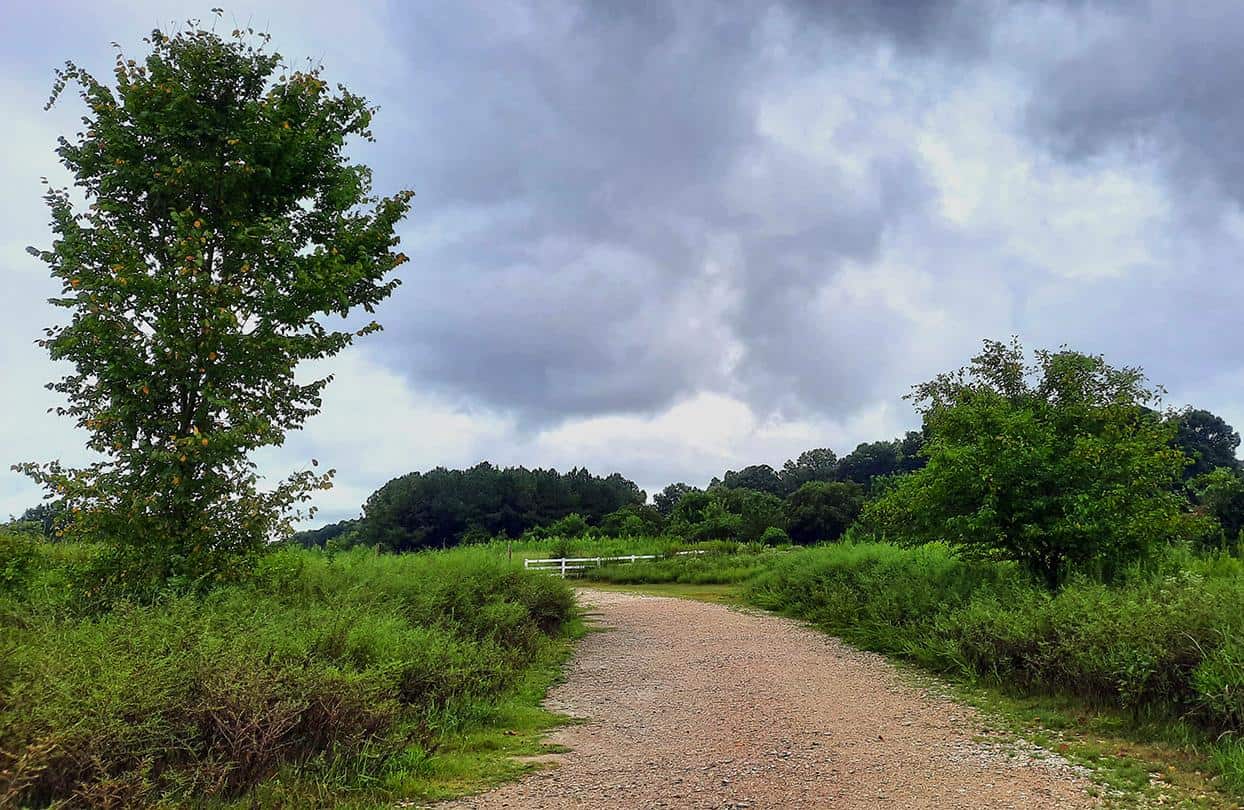
photography by: Omri Westmark
The park is named after Dorothea Dix, a 19th century activist who was a firm advocate for better living conditions of the mentally-ill. Born in 1802 at a small town in Maine, Dorothea is well-renowned for her successful decades-long endeavor, where she lobbied among state lawmakers and members of the US congress to significantly improve the treatment of mentally ill-patients across the country. Her fruitful struggle resulted in the creation of a series of facilities that were solely dedicated to treat people with a plethora of cognitive disabilities, in fact, one of which, was the former Dorothea Dix Hospital which used to operate in the middle of the nowadays park.
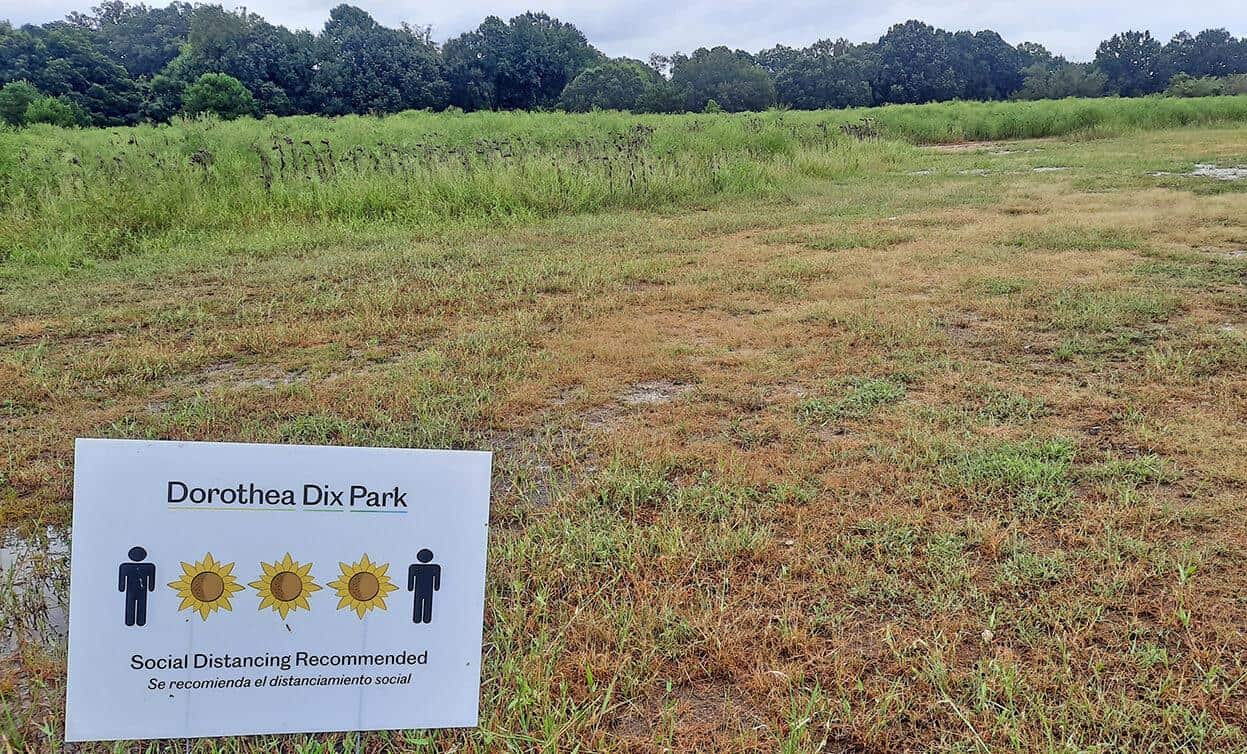
photography by: Omri Westmark
Probably the park’s most iconic section, the 5-acre Sunflower Field is a relatively new initiative, carried as a joint project by the North Carolina Museum of Art, the park’s authority and some of the city’s departments. Mostly native to North America, the blooming yellow carpet soon became a semi-hidden attraction, particularly popular among Instagrammers looking for unusual backdrop.

photography by: bobistraveling/ Flickr
Originally, the sunflower field was tucked away in a far more secluded cranny of the city, along the Neuse River Trail. Due to a lack of space, it was decided in 2018 to relocate the flowery site to its current location in Dorothea Dix Park, where the abundance of land is translated to a larger and more impressive field.
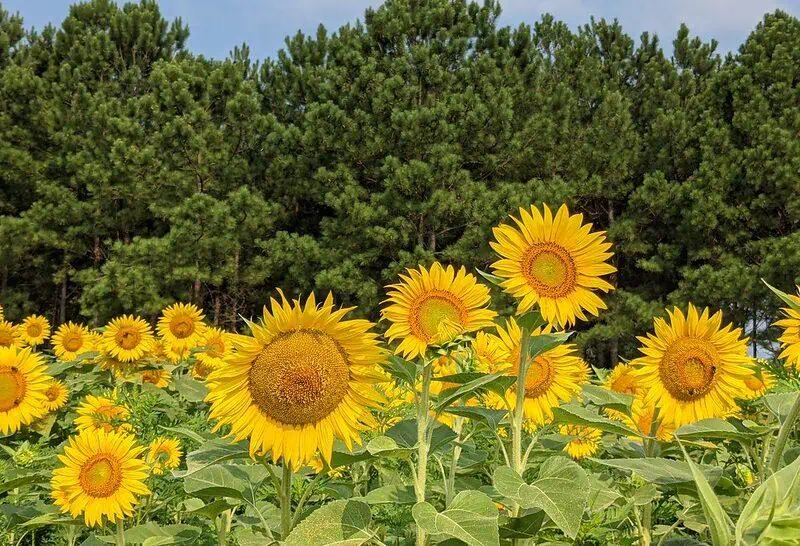
photography by: bobistraveling/ Flickr
The most recommended month to visit the field is in July, when the blossom culminates, preferably in the afternoon hours, when the sun illuminates the yellow carpet of flowers at its most flattering angle.
Suffice to say to picking flowers is strictly forbidden, while visitors are directed to walk only along the inner pathways that lie between the blooming rows.
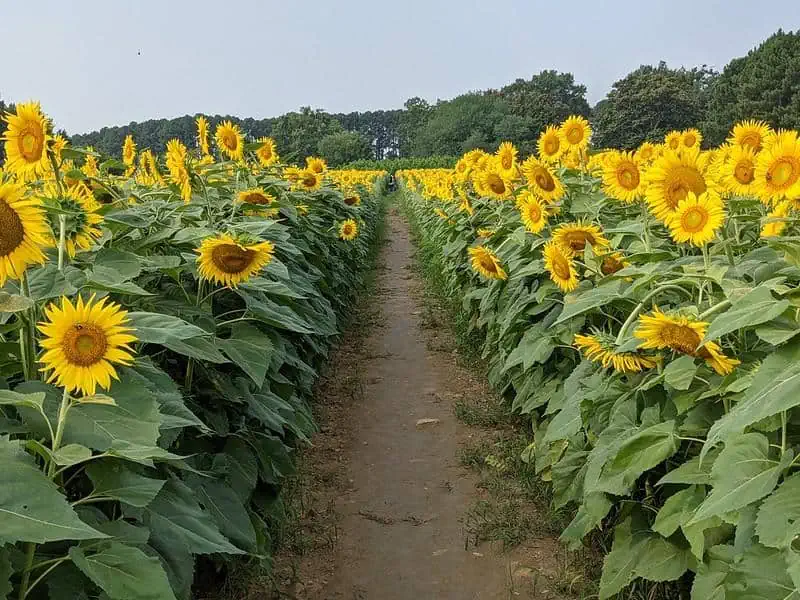
photography by: bobistraveling/ Flickr
If you happen to visit the field out of season, then you’ll might come across the dystopian sight of hundreds of withered flowers. Interestingly, when the blossom ends, Raleigh city workers harvest the seeds that are then used to make a biodiesel for educational purposes. The field stays rather empty until springtime, when it’s being ploughed and soon after planted with sunflower seeds.
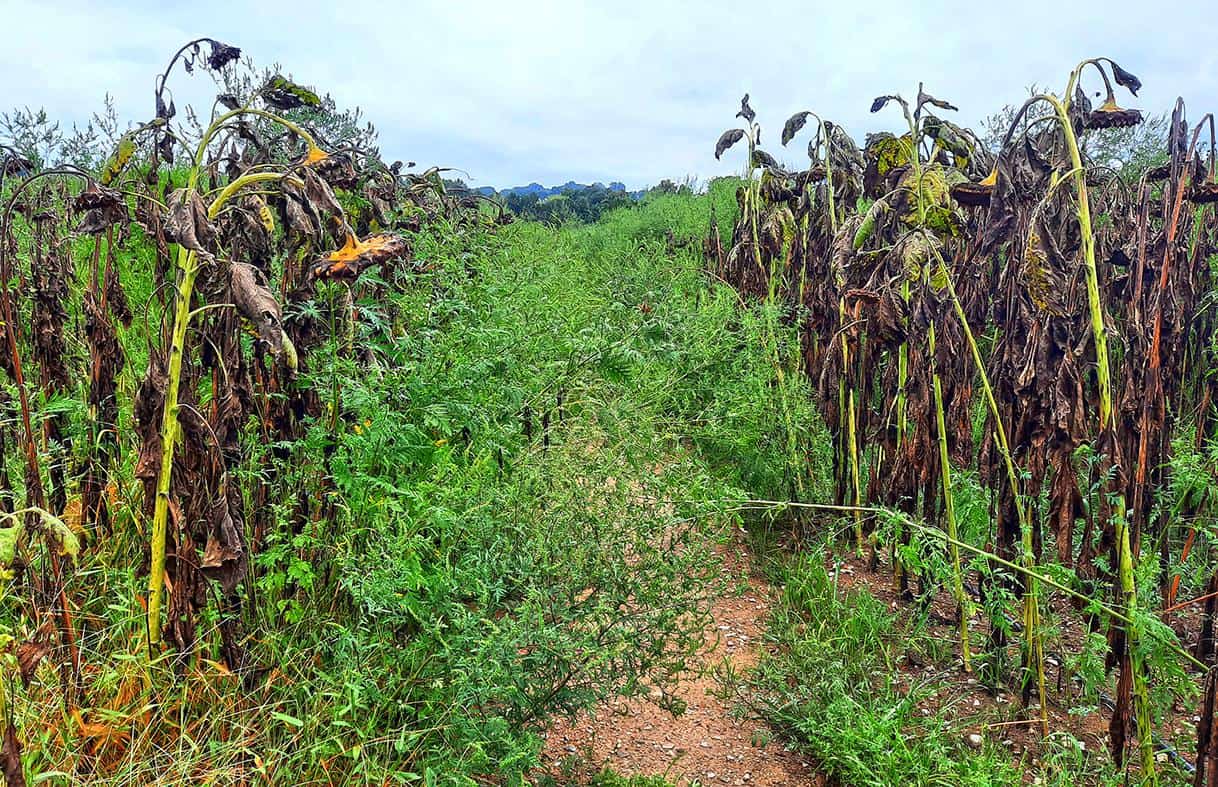
photography by: Omri Westmark
Nevertheless, even if you missed the best timing, you can still enjoy the looming skyline of Raleigh, towering above the city’s oak canopies.
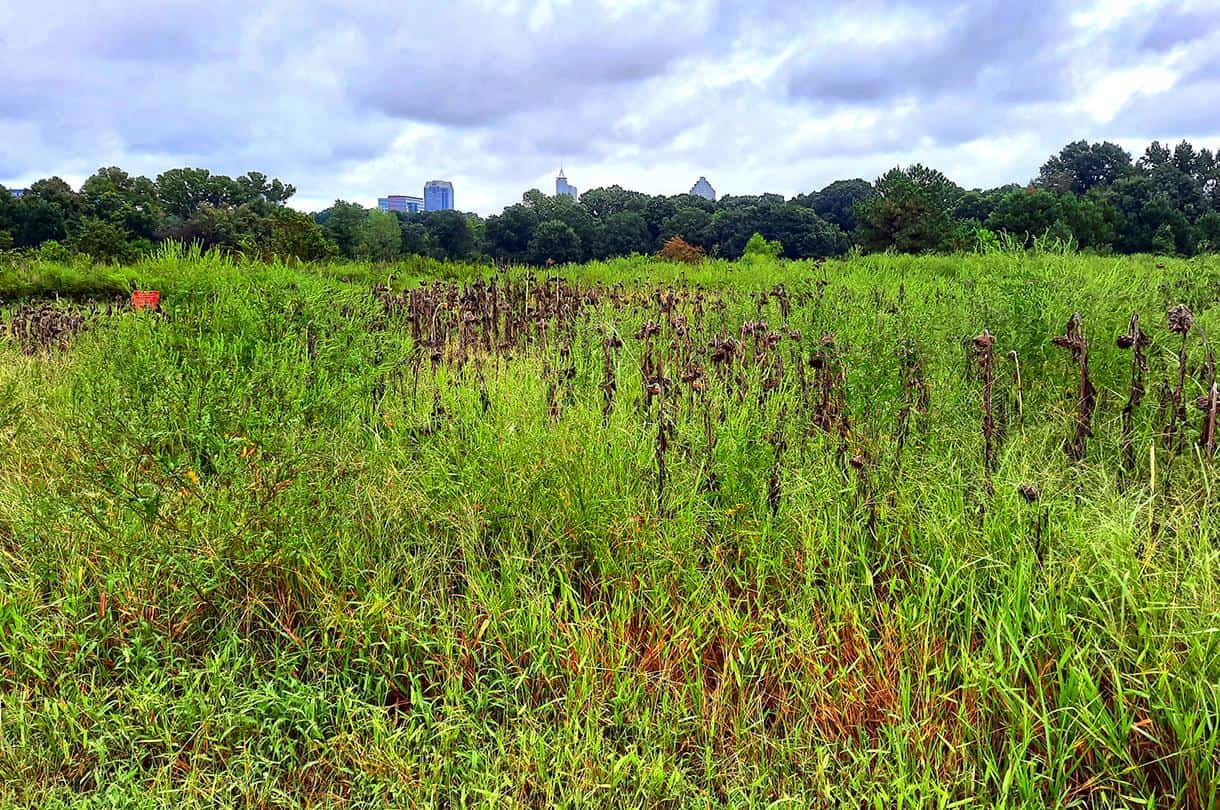
photography by: Omri Westmark
Facing the sunflower field is a small pine grove, originally planted as a barrier between a nearby landfill and the Dorothea Dix Cemetery, where many of the deceased patients from the aforementioned psychiatric hospital were buried. The coniferous woodland is only one segment of a green wall of trees that also intended to provide privacy for family members whose mentally ill relatives have just died, as at that time, it was considered a rather shameful phenomenon.

photography by: Omri Westmark
These days, the trees are utilized for a far less controversial purpose, a shaded refuge with tens of hammocks that in hot sunny days, offer a refreshing respite from the North Carolinian sun.
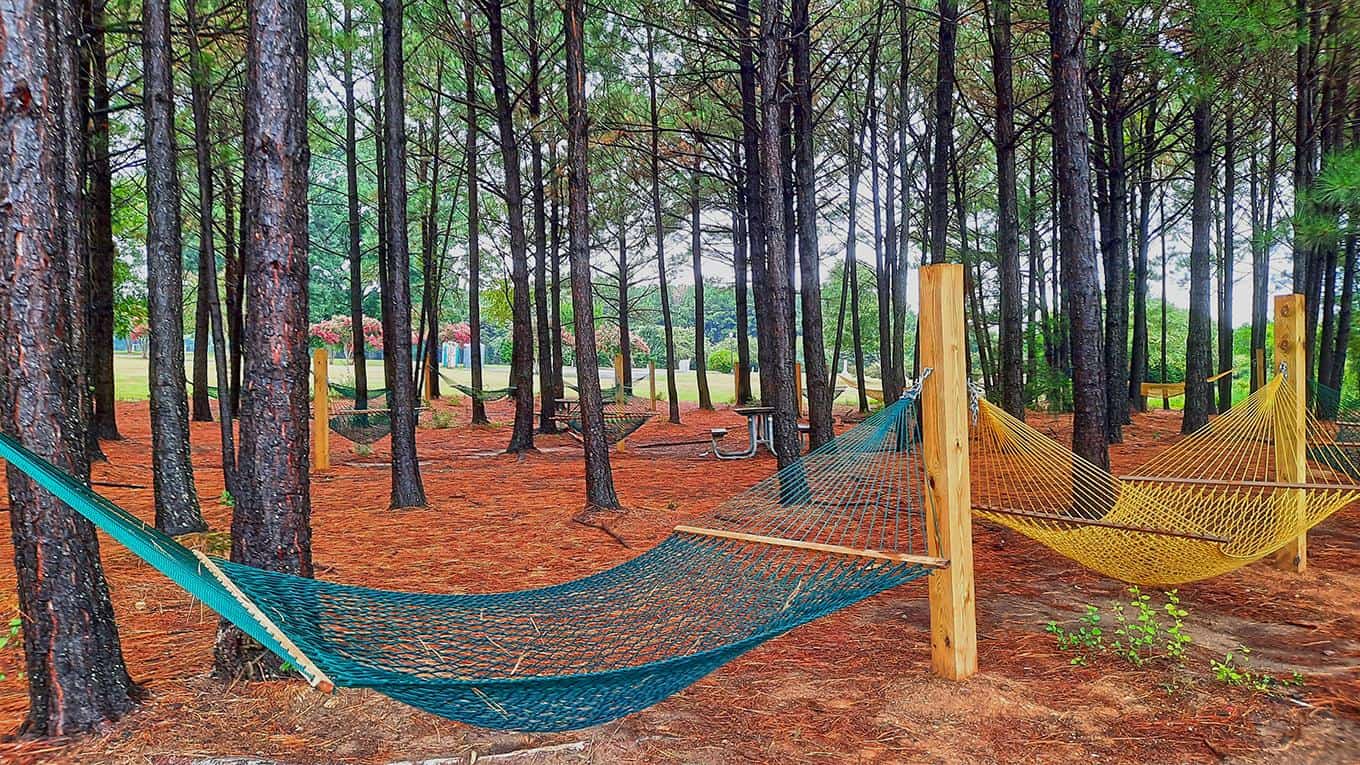
photography by: Omri Westmark
Some of the hammocks are bestowed with spectacular views of Raleigh downtown, accompanied by the vast greenery ahead, and hence, the only thing left is to grab a bottle of beer or a cup of coffee, depending on your mood.
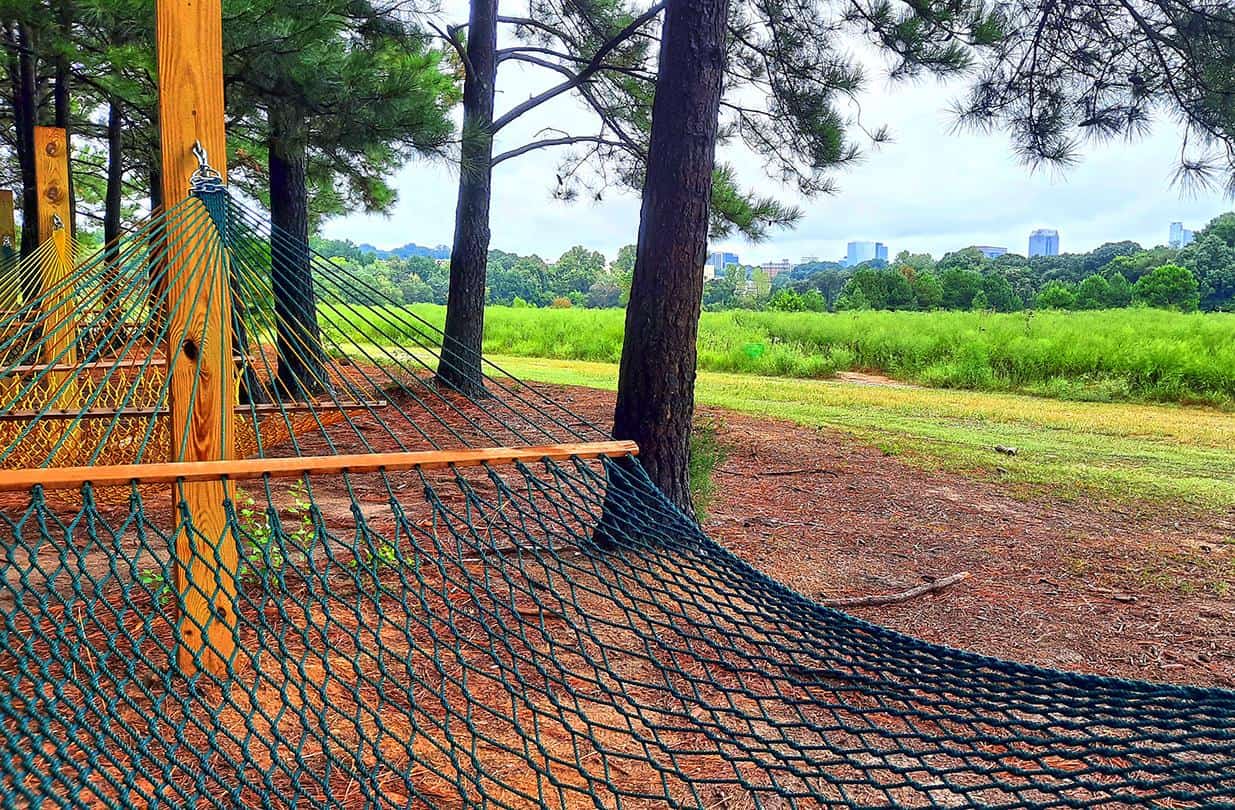
photography by: Omri Westmark
Prior to its current role as one of Raleigh’s green lungs and previously as the premises of Dorothea Dix Hospital, the area was part of Spring Hill Plantation, where African slaves were the main source of labor. Following the American Civil War and the subsequent abolishment of slavery, the plantation ceased its operations, and its only extant building, the colonial style Theophilus Hunter House was converted by the hospital to a medical facility. After the hospital was closed, it was turned into the NCSU‘s North Carolina Japan Center.
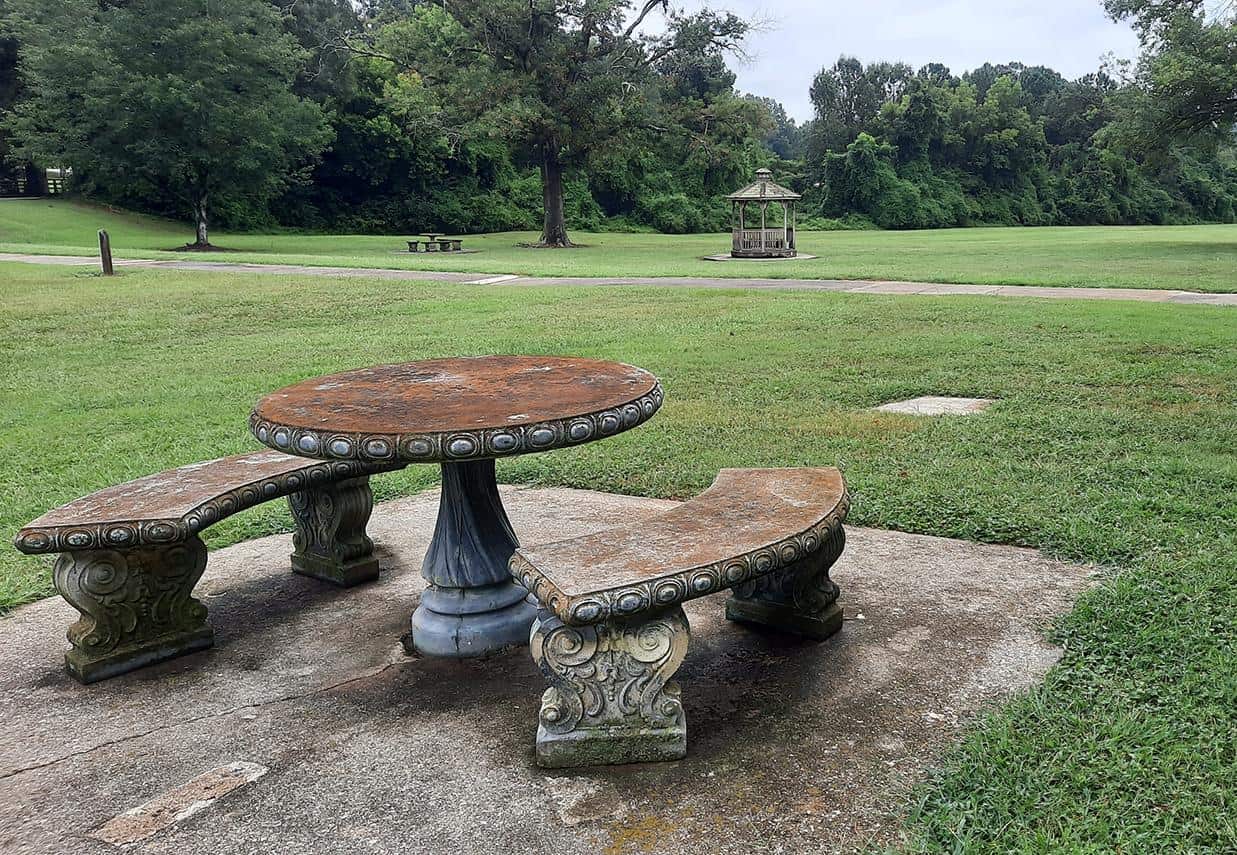
photography by: Omri Westmark
The city of Raleigh recently approved a major masterplan for the park, including the construction of several ecological corridors, natural reserves and recreational complexes, however, as for 2021, none of it has come to fruition yet. Aside from busy summer weekends, the park is relatively empty and quiet. If you find yourself in one of Raleigh’s rainy days, you can always find refuge under the trees, or alternatively, in the ramshackle wooden gazebo.
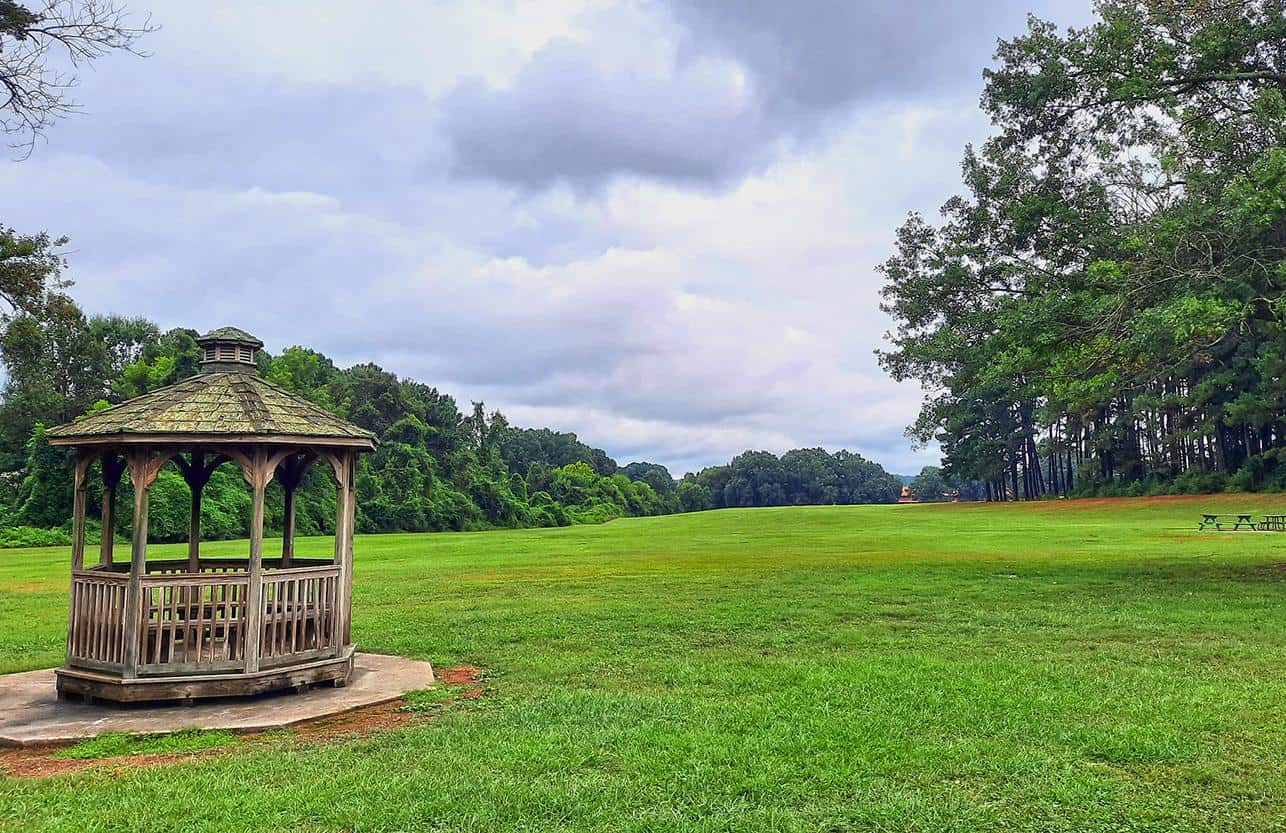
photography by: Omri Westmark
The gazebo overlooks the Big Field, that as its name suggests, is a gargantuan lawn bordered by a pine grove and a woodland of mature oaks.
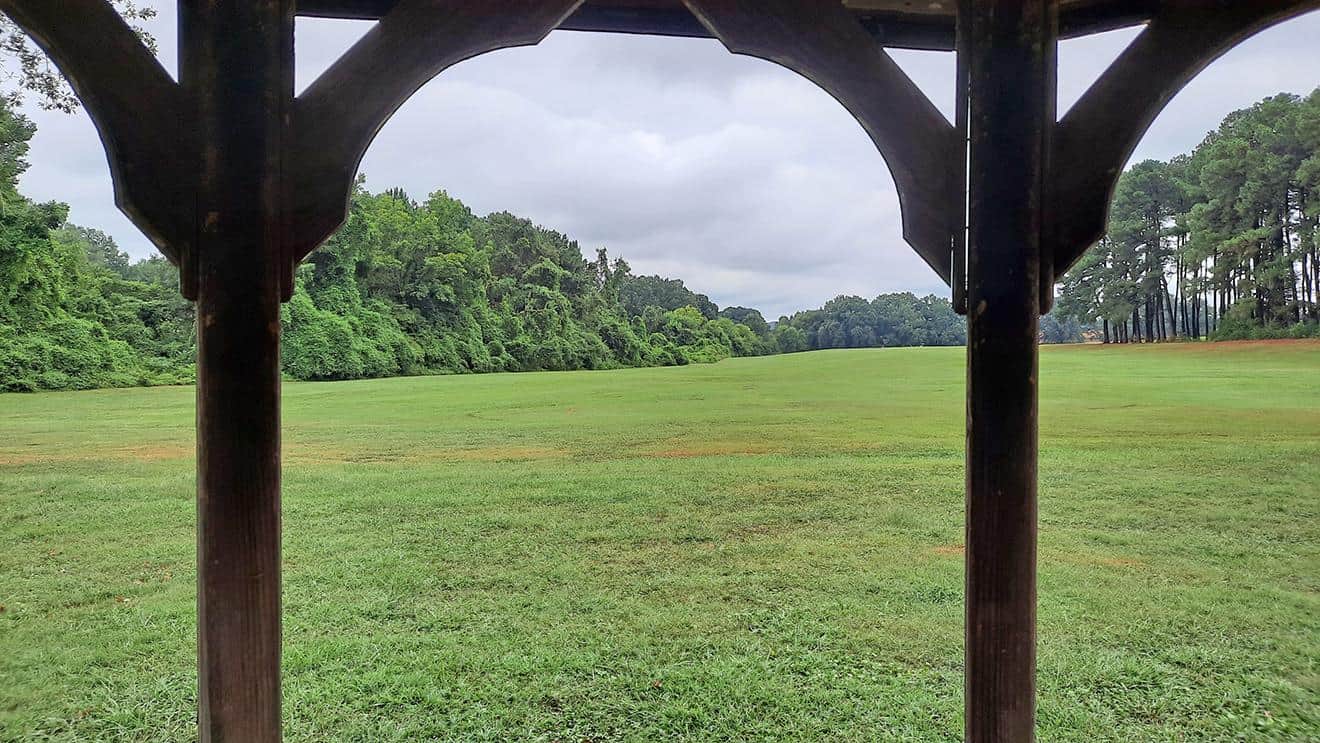
photography by: Omri Westmark
The 35-acre field is the single largest void in the city, making it a getaway for all sorts of activities like picnics, dog walking, sport games and even a makeshift airport for small drones.
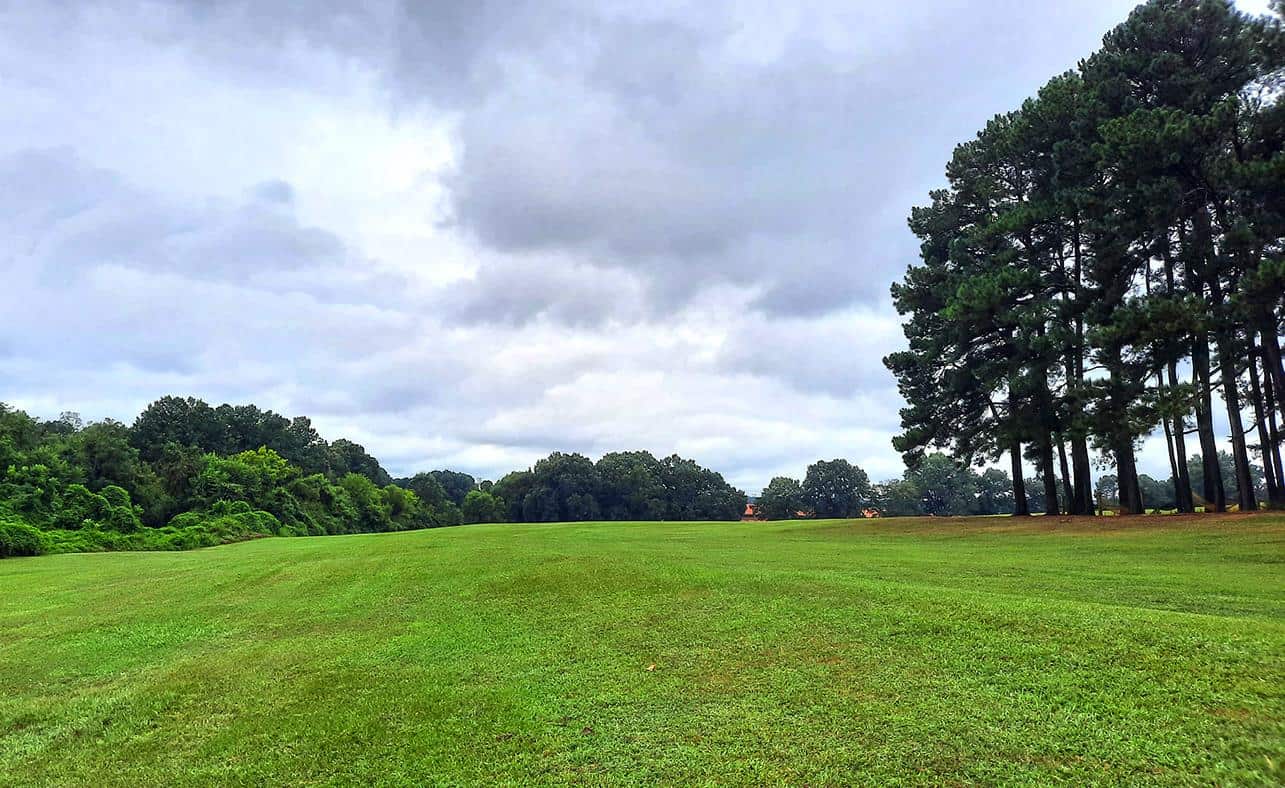
photography by: Omri Westmark
Such a large-scale meadow, only a short distance away from the downtown of a major city, is an unusual sight to behold, but even more so during a rainy weekday, where you are literally surrounded by a no man’s land taken right from an apocalyptic horror movie.

photography by: Omri Westmark
Similar to the cemetery’s mini-forest, the Big Field’s pine grove is also littered with dozens of hammocks, where one can have a break from the agoraphobia-inducing landscape around.

photography by: Omri Westmark